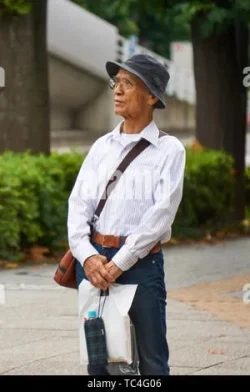I will say that I don't know about the below.
If he's talking about dan bars, I guess, but I hope the lack of dan bars is what he means by "plain." Because if we're talking about embroidered calligraphy, then...
The head of JKA himself - Masaaki Ueki - not wearing a plain belt.
View attachment 30224
Nobuaki Kanazawa, son of Hirokazu and current head of SKIF - not wearing a plain belt.
View attachment 30225
Morio Higaonna - head of IOGKF - not wearing a plain belt.
View attachment 30226
Angi Uezu - his own dude - not wearing a plain belt
View attachment 30227
Who are the Japanese and Okinawan masters that are wearing belts with nothing on them?
My understanding was always the opposite - that having your name on your belt AND gi in Japan was the sign of humility. It's supposed to show that you have no expectation of the instructor remembering you or your name. It's fashionable to us in the West, because it's "foreign" and "exotic." It's just writing to them.


